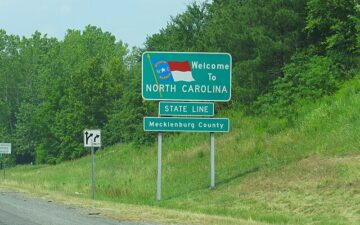North Carolina: Census 2020 Real-Time Response Rates – Week ending May 3 (.pdf)
View All County-Level Response Rates –
Week ending May 3
April 26: NC college maps and tract data
Key takeaways for week ending May 3
- Over half of North Carolina households have now responded to the Census. As of May 3rd, the state overall response rate was 51.8% of households, compared to 56.3% of households nationwide.
- North Carolina rises one rank to 37th out of 50 states and DC. The top performing state remains Minnesota for the fifth week in a row, with a response rate of 67%. Minnesota’s response rate as of May 3rd now exceeds North Carolina’s overall 2010 self-response rate (64.8%).
- Over 3 in 5 households have responded in the top three responding counties: Union County (63.5%), Orange County (62.7%), and Wake County (61.4%). Union County has now officially exceeded North Carolina’s overall 1990 self-response rate (63%).
- North Carolina passes Arkansas in self-response rate. Having surpassed Arkansas (51.2%), there are now seven southeastern states with higher self-response rates than North Carolina: Virginia (61%), Kentucky (60%), Tennessee (55.5%), Alabama (54.4%), Florida (54.1%), Georgia (52.7%), and Mississippi (51.9%).
- Just under half of households have responded in tracts with smallest share of young children. In tracts where less than 4.1% of the population is ages 0-4, the average response rate was 49.8%. This is the only tract quartile in this category (% Young Children) that has not officially crossed the 50% benchmark, and currently stands at 2 percentage points below the state average.
- Fewer than half of households have responded in tracts with the smallest share of foreign-born residents. In tracts where less than 2.9% of the population is foreign-born, an average of 47.6% of households have responded. This is the only tract quartile in this category (% Foreign-Born Population) which has not exceeded 50% of households, and currently has a gap of 4.2 percentage points below the NC average.
- The state average is nearly 7 percentage points greater than the average for tracts with the largest share of minority residents. In tracts where over 50% of the population is non-White, the average response rate is 45% – 6.8 percentage points below the state. This is the only tract quartile in its category (% Minority Residents) that has not yet met the 50% benchmark.
- Over 3 in 5 households have responded in tracts with high internet access. The average response rate for tracts with the highest internet access is 60.9% – 9.1 percentage points above the state average.
Last updated: 5.4.20


